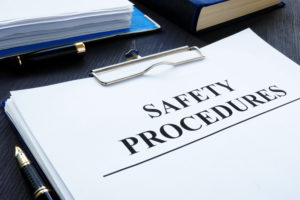 Last week, the Toronto Star reported that safety audits of temporary staffing agencies by Ontario’s workers’ compensation board fell by 80% in 2018 from 2016. According to documents the newspaper obtained through a Freedom of Information request, the board conducted 85 audits of temporary help agencies in 2018, down from 454 in 2016. The drop is puzzling, noted the paper’s editorial board, given that the Workplace Safety and Insurance Board follows a risk-based audit process. Because temporary agencies are considered higher risk, the editorial board reasons, their audits should have increased rather than fallen.
Last week, the Toronto Star reported that safety audits of temporary staffing agencies by Ontario’s workers’ compensation board fell by 80% in 2018 from 2016. According to documents the newspaper obtained through a Freedom of Information request, the board conducted 85 audits of temporary help agencies in 2018, down from 454 in 2016. The drop is puzzling, noted the paper’s editorial board, given that the Workplace Safety and Insurance Board follows a risk-based audit process. Because temporary agencies are considered higher risk, the editorial board reasons, their audits should have increased rather than fallen.
The data and the province’s audit process notwithstanding, worker safety is something every temporary staffing firm and enterprise that uses contingent labor should be mindful of — and not just for budgetary reasons. While a good safety record does reduce workers’ compensation costs to the staffing firm — and ultimately to the buyer — the human costs of an unsafe workplace are beyond measure.
“OSHA and the safety agencies of other countries believe an unproven but reasonable hypothesis — that temporary workers experience greater workplace risks than direct employees,” says George M. Reardon, an attorney who specializes in the staffing industry. “For financial and policy reasons, staffing firms and their clients should believe that hypothesis and proactively address the issue, regardless of government enforcement.”
Yet some companies still resist offering to contingent workers the same type of training they provide their employees. “Sometimes, host companies express concern that providing training may increase the risk of co-employment,” says Dawn McCartney, VP of Contingent Workforce Strategies Council, Staffing Industry Analysts.
PREMIUM CONTENT: Insights on Workers’ Comp. for Industrial Staffing Firms
But contingent workers should automatically be given identical or equivalent safety training given to full-time employees, she says. In this scenario, it’s not really about co-employment but human safety. Reardon concurs: “Co-employment myths are no reason to withhold training or other safety measures from assigned employees.”
And when those contingent workers are procured through a staffing firm, the two companies should be working together to ensure the workers are properly trained and equipped. Be prepared to allow your staffing firm to see your workplace environment and to review your existing training program for staff so they evaluate what type of training and protection they will need to provide to their contingent workers.
You should also review the staffing provider’s safety training once it is established to ensure nothing has been overlooked. There may be additional training you will have to provide once the worker is on site. This should be viewed as a joint responsibility as part of a known, team-executed onboarding plan.
A regulatory audit, or lack thereof, should not be the primary motivator for establishing worker safety programs. It should be something companies do because the safety of their workers is important to them.








